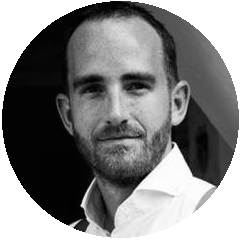Insights
Effective Virtual Communication: Tips for Remote Work

Communication Advice for the Hybrid World
Tom Cassidy is the Head of Executive Coaching at Working Voices and He'll lead a session on "Communicating with Impact and Influence" at an AESC Executive Research Forum. AESC spoke with Tom about effective virtual communication and building trust in a remote work environment.
AESC: Tom, something we’re all grappling with—How do we build and maintain quality professional relationships in an increasingly virtual workplace?
TOM: A lot of people are experiencing a kind of loneliness at work in our COVID era. It may not be affecting us consciously, but it’s there. People are not getting the quality connection they need in the workplace. They are having high volume with video calls, etc., but not the quality of connection that they really need. My upcoming session will get into this.
What has changed in our relationships with colleagues and clients since COVID?
A big factor, known as incidental communication, is missing. Incidental means those, “Have you got a moment?” connections and the type of culture we get when we’re in a shared workspace—those moments when we just bump into each other. It’s often called “water cooler moments.” Incidental communication is so important in building relationships. Bumping into someone and saying, “Oh, I'm working on this. I'd love your advice. What do you think about this?” That's so crucial for people to be recreating in their virtual lives now.
What are some of the ways we can have more effective virtual communication with our colleagues and clients?
A lot of our interactions at work are more organized and structured. We set up a slot in our diary, with a specific agenda, and we know what's happening. Often there are multiple people in those sessions, so they become very formal. They've got a specific outcome, which is great. That serves a certain purpose.
The incidental or the extra bits missing that I think people can recreate are things like talking to people beforehand to call or message everyone—a quick conversation to say, “Hey, this is what I might talk about. These are some ideas I've got. What do you think?”— that spontaneous, before-the-meeting briefing.
Then, after the meeting, touching in with people and saying, “How do you think that went? What were your opinions? What was the mood?”—checking the temperature, what people would naturally do in a physical space together. I think we have to be working slightly differently now in order to engage in those incidental interactions.

And does it matter what the tools are that we use to do this?
The tools for effective virtual communication are unique for everyone. I’ve gone quite retro, where lately I like simple calls where it's just audio. I can chat with people while I'm walking around. They've learned to contact me that way, and I've learned to tell them to do that. It’s a personal preference.
Other people might WhatsApp me and go, "Hey, Tom, how did that go? What do you think?” and that’s great, too. So, I think we all have to be comfortable using multiple channels. Comfort with email and video is one form, other tools like Slack, or even using Twitter or Instagram to DM people. That's just as important. In a professional realm, it’s LinkedIn. I tell my audience they can find me on LinkedIn. I always get requests to connect afterwards, and people will just DM me or send me an InMail to say, "That was great," or, "I had just a question I couldn't ask." That's a really nice way to connect. That's how to use social media tools effectively.
It's an important question for people to answer—How do they want to be reached? What's the best way to reach each other? It can be hard to do with someone you're meeting for the first time, but it's important to do with someone you're interacting with a lot.
Even with fewer of those in-person benefits we are getting now, if we think about it in the positive, there are more ways than ever for everyone to connect.
Exactly. It can be a nice leveler. As an example, people have felt a little uncomfortable knocking on a senior leader’s door. The leveler now is you can ping them a message instead and say, "Hey, I'm going to be putting this forward in this meeting. What do you think?" You'll generally get a response. There's a real positive to that, people are feeling that they can connect with a wider circle at work in a wider format, less hierarchy and more access.
We've talked about some of the positive things we can do to have more effective virtual communication. What are some of the things that we're getting wrong and what can we do to avoid them?
I will be talking about this in my upcoming session. I’ll give some little appetizers that I think are helpful. We're now working in a way that's “always on.” Even pre-pandemic, a lot of people were contactable at all times. We have to be more disciplined in setting boundaries. One is not letting that always-on culture reflect people's commitment, or loyalty, or work ethic, because it doesn’t.
The second thing is, of course, fatigue. I'm hearing a lot from clients about the heightened importance of setting aside designated time in their days for specific types of work. For example, Monday mornings, that's their time to reach out to people. Then Monday afternoon, that's when they switch off communications and get on with focused work. Some companies have implemented no-video Fridays. They can have meetings, but you're allowed to not have your video on, for example.
Setting aside times to say, "That's when I'm going to do my focused work, and I'm not going to have my email on, or I'm not going to have Slack open, or my phone near me so I can do my deep work." Otherwise, we can get pulled in so many different directions, and constant noises and notifications from communications apps can distract so much that we eventually stop doing any productive work.
Those practices of having times for specific types of work are helpful. It’s important to not feel guilty or anxious about it. It sets the tone for the rest of the people that you work with and that you're in contact with. There's no reason why we have to be on all the time, all week. Clients actually respect it more when you say, "Hey, just to let you know, Tuesdays are days when I do planning. If you want to send me something, okay. I'll probably respond on Wednesday. Is that okay with you?" Just make sure that that's all right out of respect for the relationship, because I think we set up unfair expectations of ourselves by saying, "Yeah, I'll always respond quickly." When we probably gain more respect by saying, "Actually, no, that day is when I'm doing something else." People admire the fact that you've got that discipline.
When we are online, how can we be as effective as possible? How does our online presence differ from in-person? What should we be more aware of that we may not be?
With in-person communication, there are so many tiny etiquette rules that we've learned through being socialized in our lives, we do them inadvertently. We understand what the energy, what the etiquette, and the vibe is in the room. Now that more of our communication is happening online, a lot of that etiquette is thrown out the window or is harder to read.
Previously implicit ways of communicating, now have to be much more explicit. Saying things like, "I agree with that. I really like that. Let me build on that. I don't agree with that."
The second thing is being able to take your impact as a priority, and take your presence as a priority. Looking at meetings or interactions as critical impact moments. I'll be talking about this in the session. For example, “I have this meeting and I want to make this kind of impression. I've got to switch on and consciously get ready.” Treating it as a priority.
Human beings are brilliant mimics. We learn to mimic what's going on around us with the rest of the tribe. If other people aren't putting their cameras on, then we think, "Oh, it's okay." I think that misses a whole opportunity to just show your face. By the way, that's not judging people for not having their cameras on, because everyone's got their own reasons. It's just checking with ourselves if those reasons are legitimate? Are they helpful to the interaction? Again, it's akin to that old custom of shaking hands. It's to show, “You can trust me. I've got nothing in my hands that you can't see." It's huge for building trust. I think people can generally be doing more actively to build trust in their interactions.
Real or virtual video backgrounds? Does one better establish trust versus the other?
I have an opinion about this, which is I love seeing people's real life. I think there are two cases where people choose not to have their real background on. Either they're worried about being interrupted or there are things going on in the background which are distracting. I think people are much more forgiving now than they realize.
The second reason is often they're... not embarrassed, but they might be unsure about what kind of impression their world gives the other person. They want this professional, almost corporate image to be out there. Again, people are way more forgiving about real life now. We know that we've got all sorts of circumstances and challenges and scenarios going on in our lives.
I think if anything, this blurring between professional and personal life has been a great thing. Virtual backgrounds can cut off parts of people's anatomy. If the light differential isn't that great, it ends up cutting off parts of your hair, or your hands, or your arms, or suddenly something's in focus, then out of focus. Those things are more distracting than having just a natural background where you are.
What are some of the things that participants will learn in your session at the upcoming AESC Executive Research Forum?
The primary thing is thinking about personal brand and how it relates to effective virtual communication. Personal brand is a fascinating topic because ten years ago, personal brand was quite a new kind of idea, and yet now it's become common—we live in a world where there is a whole industry around influencers, for example.
Number one is getting people to realize they have a personal brand, they are in control of it, and there are things they can do to make the best of it. Next, how do you create connection and communication with each other through what you're doing? Another aspect that we're going to cover in the session is probably today’s most important tool, the art of listening. With virtual work and emphasis on personal brand, there's almost a feeling that, "I've got to be the most talkative, or the most demanding, or the most out-there kind of person to have a strong impact." Actually, the people who we really respect and like being around are those people who we know are listening to us. Listening is one of those almost forgotten superpowers.
We’ll talk about how to remember details, how to make sure that people are recalling details, and we’ll touch a bit about how to use social media to engage with people professionally. Just getting people thinking about this idea of presence is so much more than just being there. Presence requires consciously, deliberately turning up. It's an energetic activity. It's not a passive thing.
Improve your virtual communication skills with AESC and Erica Dhawan's Improve Your Digital Body language course.